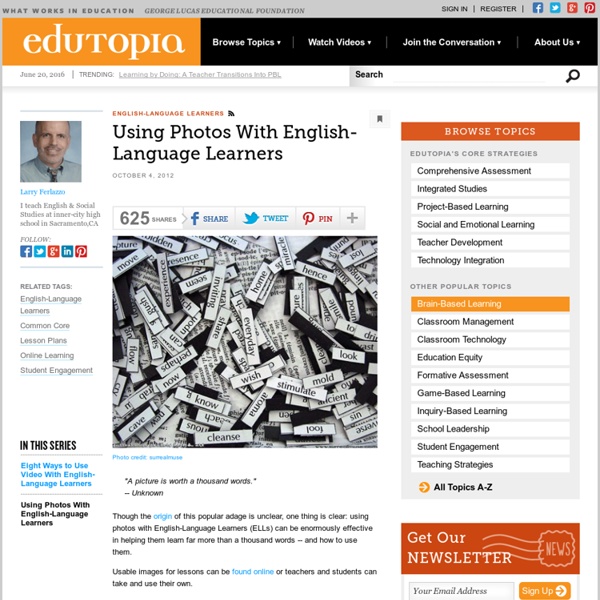Using Photos With English-Language Learners

English-Language Learners and Academic Language
Editor's Note: This blog was co-authored by Katie Hull Sypnieski. Portions of this post are excerpted from their book, The ESL/ELL Teacher's Survival Guide: Ready-to-Use Strategies, Tools, and Activities for Teaching English-Language Learners of All Levels. Helping English-language learners develop proficiency in academic language has always been a priority for K-12 educators, and its importance has only been heightened with the advent of the Common Core. To better understand academic language, let's examine the distinction between two terms introduced by Jim Cummins, basic interpersonal communicative skills (BICS) and cognitive academic language proficiency (CALP), that have impacted both policy and practices in second-language education: More recent research has extended CALP to include the following three dimensions of academic English: Now That We Know What Academic Language Is, How Do We Help Students Learn It? "Do you believe that ______________________?"
Five Tips for Getting the ESL Student Talking
I wanted to talk to someone. But who? It's moments like this, when you need someone the most, that your world seems smallest. -- Rachel Cohn, Dash & Lily's Book of Dares Let's face it -- everyone has something to say some time or another. Are the students afraid to make mistakes? After you ask yourself these questions and alter your teaching based on honest self-evaluation, you can incorporate more ways to encourage your students to learn English. 1. The most important thing to remember is that your students need to be speaking English as much as possible. 2. With the current educational journals consumed with such topics as Differentiated Education, Meeting the Needs of All Learners, Maximizing the Disconnect Between the Real World and the Classroom, etc., it is important that you, too, focus on each student. 3. We all learn more when we are engaged. 4. How you talk in your lessons, when both focusing on instruction and relating with your students, will increase their language ability.
Related:
Related:



